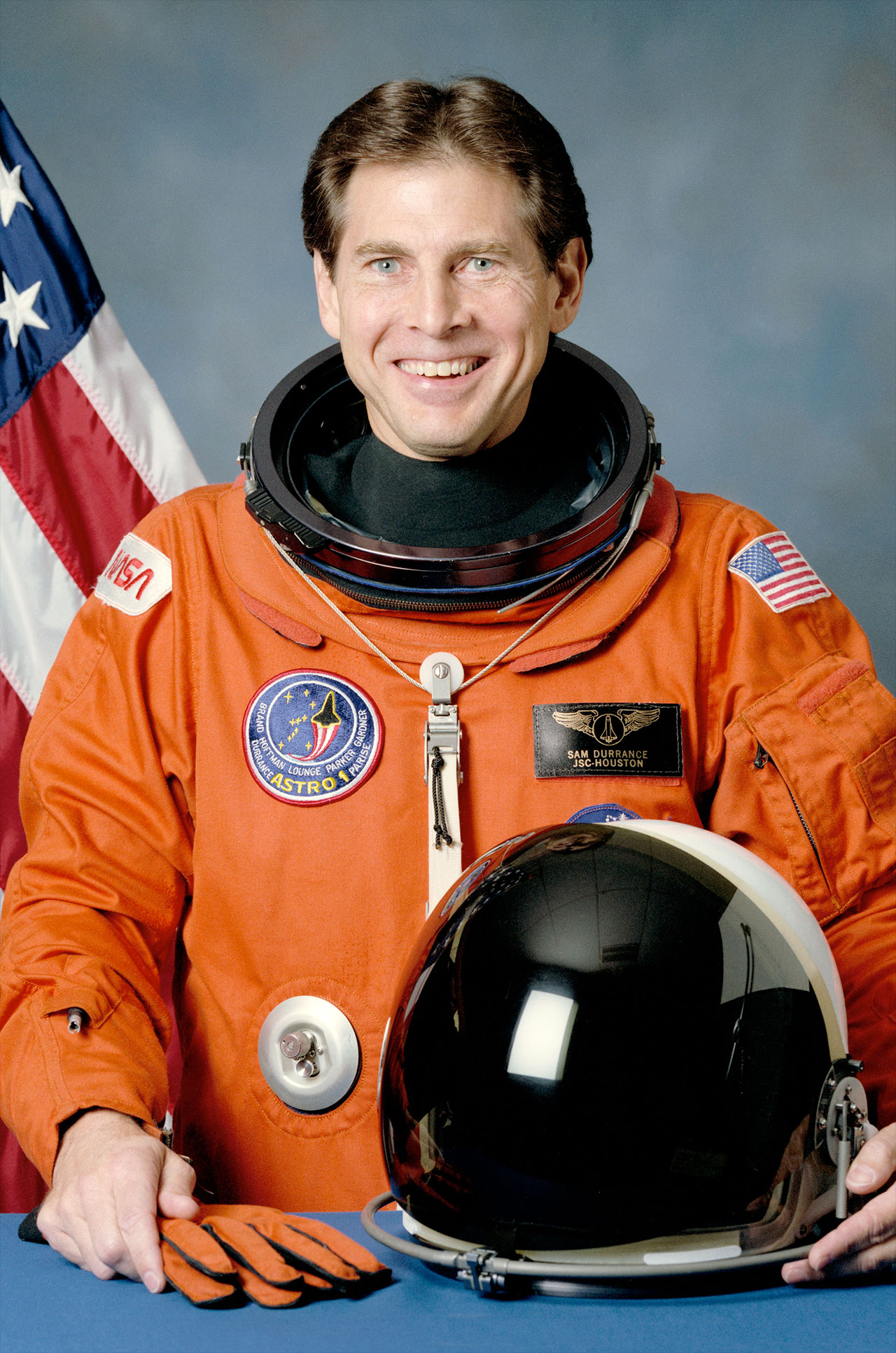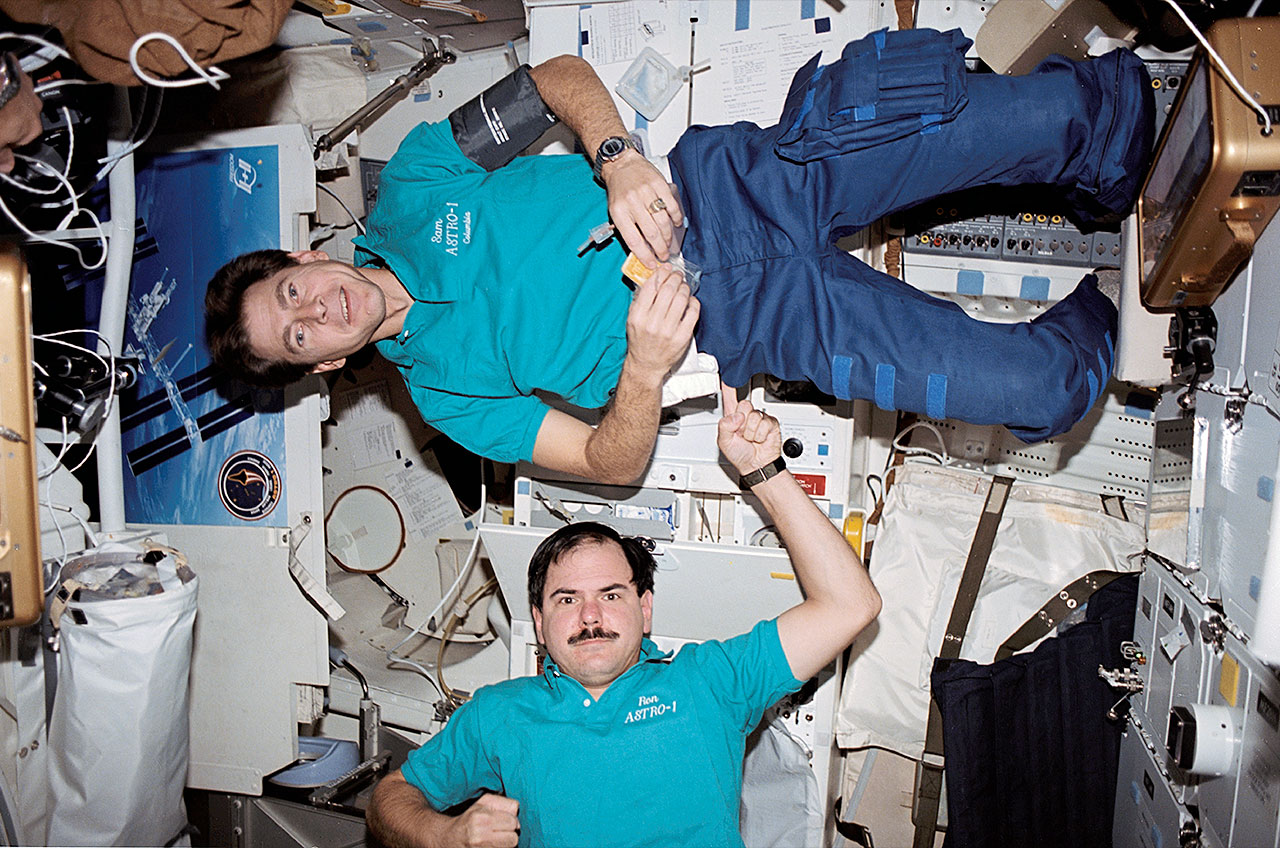Samuel Durrance, who as an astronomer was one of the first non-career astronauts to fly with NASA after the loss of space shuttle Challenger, has died at the age of 79.
Durrance’s death on Friday (May 5) (opens in new tab) came as result of complications from a fall, as reported (opens in new tab) by the Astro Restoration Project, a volunteer-driven effort to preserve the astronomical hardware that Durrance helped design and use in space.
“Sam died quietly today surrounded by family after a long struggle with dementia and Parkinson’s disease. He had spent his final days in hospice care at a facility in Viera, Florida,” his family said. “A true scientist to the end and beyond, Sam asked that his body be donated to support the ongoing medical research associated with astronauts who have flown in space.”
Durrance was chosen to train and fly as a payload specialist due to his work as a co-investigator for the Hopkins Ultraviolet Telescope, one of the instruments originally slated to launch with the STS-61E crew on the space shuttle Columbia in March 1986. The Challenger tragedy, though, delayed the flight, and Durrance finally lifted off on Dec. 2, 1990.
Related: NASA’s space shuttle program in pictures

Together with his six (re-designated) STS-35 crewmates, including Vance Brand, a veteran of the 1975 Apollo-Soyuz Test Project, and fellow astronomer-turned-payload specialist Ron Parise (opens in new tab), Durrance spent nearly nine days in orbit conducting round-the-clock observations using the four Astro-1 telescopes (opens in new tab) that were mounted on a Spacelab pallet in Columbia’s payload bay.
The crew experienced some problems pointing the telescopes at their planned targets but were able to conduct 231 observations of 130 celestial objects over a 143-hour period, achieving about 70% of the mission’s objectives.
Durrance and his crewmates also had to deal with an issue with their waste water disposal as a result of a blocked valve, as he recalled in a brief interview in 2013.
“We were an all-male crew and we had tried [prior to launch] to get contingency urine devices for females taken off the manifest so we could save weight for that, but they [NASA] said it would cost too much to change,” said Durrance as part of the Kennedy Space Center Visitor Complex’s “Tell Me A Story” video series.
“It actually turned out we needed them, because the way that we stored the waste water on board was that we built a device that could inject the waste water into these diapers, essentially, that were for the females that were not being used, so we had a way to do that,” he added.
“It was not too much fun, rerouting the plumbing, but it worked, and we were able to complete the mission,” Durrance said. Columbia landed on Dec. 11, 1990 at Edwards Air Force Base in southern California.

Durrance flew again five years later with Astro-2, the second Spacelab mission dedicated to astronomical observations. The Astro-2 instruments were designed to capture twice as much astronomical data in the ultraviolet as they had on Astro-1.
Lifting off on the space shuttle Endeavour on March 2, 1995, Durrance and his six STS-67 crewmates (including Parise, who had been aboard STS-35) again devoted most of their time to conducting continuous observations of the universe using a trio of telescopes.
“In terms of the science we are doing, we have observed many, many objects,” said Durrance as part of an interview conducted during the mission. “We have observed over 100 astronomical objects. We’re observing in the ultraviolet. We’re observing stars, galaxies and looking at the ultraviolet light that comes from them, which doesn’t reach the surface of Earth. So we are learning a lot about the universe that we didn’t know before.”
“I think that’s an amazing accomplishment,” he said. “The shuttle system is an incredible piece of technology, and I think America should be proud of it.”
Endeavour landed on March 18, 1995, at Edwards Air Force Base, after 16 days and 15 hours in space. Over the course of his two spaceflights, Durrance logged a total of 25 days, 14 hours and 13 minutes, while completing more than 400 orbits of Earth.
Samuel Thornton Durrance was born on Sept. 17, 1943, in Tallahassee, Florida, but he considered Tampa his hometown. He received a Bachelor of Science degree and a Master of Science degree in physics from California State University, Los Angeles in 1972 and 1974, respectively, and a doctorate in astro-geophysics from the University of Colorado at Boulder in 1980.
Durrance was working as a research scientist in the department of physics and astronomy at Johns Hopkins University in Baltimore when he volunteered to become a payload specialist. Prior to training with NASA’s astronaut corps and flying into space himself, Durrance made observations of Venus, Mars, Jupiter, Saturn and Uranus using the International Ultraviolet Explorer and helped develop special pointing techniques needed to observe solar system objects using that orbiting observatory.
In addition to his role in the design, construction and integration of the Hopkins Ultraviolet Telescope, Durrance designed and built spectrometers, detectors and imaging systems, as well as made numerous spacecraft and ground-based observations. At Johns Hopkins, he led a team that designed and constructed an instrument that led to the first unambiguous detection of a cool brown dwarf star.
Related: 8 baffling astronomy mysteries

After his second spaceflight, Durrance served as the director of science and technology for Final Analysis, Inc., helping to develop a program to fly scientific instruments on the company’s planned low Earth orbit communications satellite constellation. Durrance then served as an associate professor at the University of Central Florida and as director of the Florida Space Grant Consortium.
In 2001, Durrance became the executive director of the Florida Space Research Institute, leading the development of space-related research and educational programs for the state. Five years later and through his retirement due to illness, Durrance taught and led research at the Florida Institute of Technology, focusing on planetary science and human space exploration. His areas of study included the hazards associated with long-term exposure to the space environment, lunar dust physics and detecting life on exoplanets.
Durrance also joined the Commercial Spaceflight Federation’s (CSF) Suborbital Applications Researchers Group and became director of the Sub-Orbital Research and Training Center, the latter utilizing flights of F-104 “Starfighter” jets from the Launch and Landing Facility at Kennedy Space Center to prototype spaceflight hardware for NASA and commercial companies, as well as to develop an imaging system designed specifically for imaging Earth’s coastal regions.
Durrance was a lifetime member of the Association of Space Explorers, a not-for-profit organization for worldwide astronauts and cosmonauts, which counted him in its “Registry of Space Travelers” as the 243rd person to fly into space and 236th to enter orbit. He frequently made public appearances as part of Kennedy Space Center Visitor Complex’s daily Astronaut Encounter program.
Durrance was married to Rebecca “Becky” Ann (nee Tuggle) with whom he had two children, Ben and Susan.
Follow collectSPACE.com (opens in new tab) on Facebook (opens in new tab) and on Twitter at @collectSPACE (opens in new tab). Copyright 2023 collectSPACE.com. All rights reserved.
